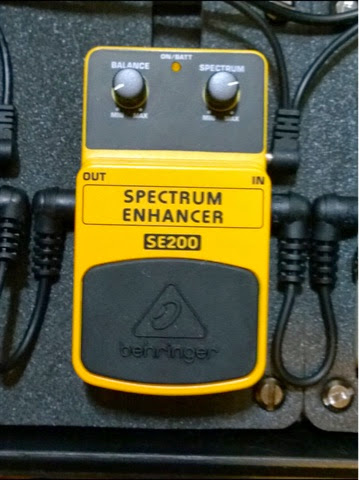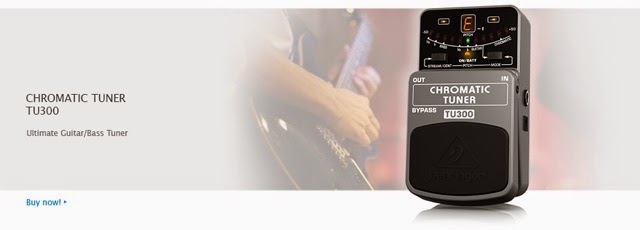Intro
I have owned a Fractal Audio Axe-Fx Ultra (long sold) and I currently own an Axe-Fx 2. I bought the Axe-Fx 2 several years ago. If you haven't experimented with an Axe-Fx personally, then it is difficult to understand how superior it is to everything else. I don't mean "slightly better than a Line 6 POD HD500X". I mean the the Axe-Fx is in a category which it alone occupies. It is that much better. Really. The subtle and complex sonic detail, the incredible dynamic depth (every patch "breathes"), the amazingly nuanced and faithful amp modeling, the signal quality (which reflects the top-of-the-line components comprising its innards), etc. If you have been skeptical about the Axe-Fx, you are justified, because there is nothing against which it can be fairly compared. I bought the Line 6 HD500 when it was introduced. I already owned an Axe-Fx. By comparison, the HD was a piece of crap. (I'm a huge Line 6 fan; owned and loved the X3 before owning the Axe-Fx Ultra.) I updated the HD's firmware faithfully, but really it never had a chance. It lost the "battle" before I bought it. No firmware upgrade changed its fundamental sonic character, anyway. Perhaps the Eleven Rack comes a little closer, though I doubt by much.
Exposed to the phenomenal Axe-Fx, why would I create an old-fashioned pedalboard comprised mostly of the cheapest effects pedals money can buy?! (Though, notice the BOSS pedals creeping into this pedalboard! What can I say? BOSS is king of pedals, as far as I'm concerned.) I wanted to tweak a chain of old school pedals, where, sonically, every physical adjustment "fixes" the sound, and every tweak is a one-to-one relationship between knob and effect.
And, I felt like a kid in a candy store while building it!
Chain
The signal path flows from lower right to upper left, in the shape of a Z. I will review separately each of the following pedals. For this entry, I focus on the ordering of the effects in the chain, with only cursory discussions of each pedal.
BOSS FB-2 Feedbacker/Booster (not shown) -- mono in / mono out
-=[{ Start: Behringer PB1000 Pedal Board }]=-
BOSS TU-3 Chromatic Tuner -- mono in / mono out
BOSS DA-2 Adaptive Distortion -- mono in / mono out
Behringer TM300 Tube Amp Modeler -- mono in / mono out
Behringer NR300 Noise Reducer -- mono in / mono out
Behringer SE200 Spectrum Enhancer -- mono in / mono out
Behringer SP400 Super Phase Shifter -- mono in / mono out
Behringer CD400 Chorus Space-D -- mono in / stereo out
Behringer FL600 Flanger Machine -- stereo in / stereo out
Behringer TP300 Ultra Tremelo/Pan -- stereo in / stereo out
Behringer EM600 Echo Machine -- stereo in / stereo out
Behringer RV600 Reverb Machine -- stereo in / stereo out
BOSS TE-2 Tera Echo -- stereo in / stereo out
-=[{ End: Behringer PB1000 Pedal Board }]=-
Focusrite Scarlette USB (not shown) -- stereo in / USB-to-computer out
Build
The Behringer PB1000 Pedal Board is equal in quality to BOSS'es plastic pedalboards (I own both). Without modification, it can house 12 BOSS-sized pedals. The PB1000 comes with enough connectors to handle most scenarios, though my setup was stereo-heavy which required ordering extra patch cables (Hose 3 inch right angle patch cables, via Amazon). The foam, which covers the floor of the pedalboard and comes with 12 cut-outs, each the size of a BOSS pedal, can be modified by cutting shapes for differently dimensioned pedals. I did not need to modify mine, since I intentionally bought pedals that would fit. When I replace the Behringer TM300 Tube Amp Modeler with a Tech 21 SansAmp GT2 (which Behringer blatantly copied), I may need to carefully modify the foam to accommodate the GT2's width.
The build of the pedals (i.e., BOSS vs. Behringer) cannot be effectively compared. Please see my reviews of the BOSS DA-2 Adaptive Distortion and the Behringer TM300 Tube Amp Modeler where I discuss build quality in detail.
Sound
Surprisingly, Behringer has created a series of gems. Most of the Behringer pedals seem to be answers to much more expensive pedals with similar (and, in some cases, identical) features. The Behringer pedals you see on my pedalboard are the best pedals Behringer offers, in my opinion. They all do their jobs very well, and they sound great. I "weeded out" other Behringer pedals I deemed too noisy or disruptive (e.g., clipping)--even with effect turned off--to keep in the signal path. A few others were too generic in nature to be useful to me. Others I simply replaced with superior pedals. * Of course, BOSS pedals are always high-quality. Every BOSS pedal I've placed in this board will probably never leave it. What you see (pictured) is as close to sonic perfection as I could get... on a budget. It really is a blissfulicious configuration.
0) BOSS FB-2 Feedbacker /Booster: Wonderful as a booster, especially with its dialable tone center. I use it primarily to add a touch of sparkle to my sound, to liven and define the guitar signal. I also use the Feedbacker feature occasionally, which creates natural feedback even at low volumes.
1) BOSS TU-3 Chromatic Tuner: Best, most user-friendly, and toughest, chromatic tuner money can buy in its price range. It adds no coloration, mutes while tuning, and, like all BOSS pedals, provides pristine signal buffering at all times.
2) BOSS DA-2 Adaptive Distortion: Please see my separate review of this pedal.
3) Behringer TM300 Tube Amp Modeler: Please see my separate review.
4) Behringer NR300 Noise Reducer: Average-ish noise reducer pedal. I don't have extensive experience with noise gate pedals, though sonically it seems to do a decent job of lowering the noise floor when the DA-2 is engaged, without introducing distracting artifacts. For the price, it can't be beat.
5) Behringer SE200 Spectrum Enhancer: Interesting and unique-sounding effect with adjustable tone center via the SPECTRUM knob. You can see by my setting that I mix in only a small amount of the effected signal (BALANCE knob is set at a very low setting). This pedal is like a sweepable notch filter. I use it to add a touch of midrange presence on occasion, similar to how I use the BOSS FB-2, but this pedal emphasizes frequencies differently. The SE200 is a "secret sauce" type of pedal, and I like it.
6) Behringer SP400 Super Phase Shifter: Nice-sounding and highly adjustable phase shifter. I think I could dial in a setting to convincingly mimic almost any guitar part. You can see from how I've adjusted the SP400 that I like a specific, somewhat slow, upward-moving shift setting, which I use sparingly.
7) Behringer CD400 Chorus Space-D: This pedal is one of the stars in the Behringer universe. It creates quite a variety of lush, beautiful stereo chorus effects, and some crazy ones, too. On my Candy Store Pedalboard, the CD400 is the point at which the signal goes from mono to stereo. As a side note, I suspect the CD400 is an emulation of a more expensive chorus pedal.
8) Behringer FL600 Flanger Machine: This is another standout. It can produce everything from gorgeous stereo flanging to off-the-chain mayhem. I use it and the chorus almost interchangeably, though I tend to favor the FL600 when I need a field of flanging flavor. With the SP400, CD400, and FL600 all enabled at the time, I can create some weirdly cool and lovely ambience.
9) Behringer TP300 Ultra Tremelo/Pan: Transparent, and therefore awesome, stereo trem. Notice stereo in and out.
10) Behringer EM600 Echo Machine: My favorite Behringer pedal. I have a soft spot for well-done tape echo emulation, especially when it can be set via tap tempo. The quality and variety of the effects this can generate, including emulating weird feedback tricks while in tape echo mode, make it the best of the Behringer bunch. As with several other Behringer pedals in this series, I suspect the features of the EM600 were copied from other more expensive pedals.
11) Behringer RV600 Reverb Machine: A solid member of the reverb pedal pantheon. It has a selection of passable-to-good reverb settings. The HALL, CHMBR, ROOM, PLATE, SPRING, and '63 SP are probably the best, from a quality perspective. The DUCKING ducked too much, for my tastes, regardless of settings. The SPACE, CAVE, TILE, and ECHO are all usable, recordable novelty settings. I set mine to SPACE to add a subtle crystalline chimey "tail" when the muse beckons (e.g., ambient, and/or adding texture to the overall sound). Again, this pedal is probably a technology ripoff, more or less. Good ol' Behringer.
12) BOSS TE-2 Tera Echo: The vaunted Tera Echo can do no wrong, it seems. It sounds great no matter the settings. I really like the Tera Echo. As you've probably read elsewhere, the TE-2 is neither a reverb nor an echo, and yet it is both... kind of. The TE-2 adds a shimmery ambience which is difficult to describe. It responds to the dynamics of the guitar signal with an interesting, often subtle, modulating filter, where the modulation seems to be occurring on the echos as they tail off. Even my attempt to describe it is lame. If the opportunity arises, try one out, and make sure to mess with it for a good while to get a feel for its capabilities. I could easily use it as my only echo/reverb while playing live, as it adds much more than merely echo-like and/or reverb-like qualities, while somehow simultaneously filling both roles very well. The BOSS TE-2 Tera Echo is definitely a "secret sauce" pedal par excellence.
Conclusion
My little candy store pedalboard is the shiznits! Old school meets schoolofrock, all the way.
The Outcasts
* I tried the following pedals, then later donated. See the first paragraph of the "Sound" section above where this subject was introduced.
Behringer RM600 Rotary Machine: Loved it, but noisy when "off", thus unusable for me.
Behringer FM600 Filter Machine: loved this, but ran out of space on pedalboard, so bye-bye
Behringer US600 Ultra Shifter/Harmonist: another solid entry, but I had no practical use for it
Behringer CS400 Compressor/Sustainer: Okay compressor/sustainer, but didn't need it
Behringer PB100 Preamp/Booster: Clipped in "off" if GAIN set past "11:30 o'clock"
Behringer XD300 Distortion-X: Mediocre distortion pedal; nothing special.
Behringer DR600 Digital Reverb: Decent multi-reverb, but RV600 more feature-rich
Behringer FX600 Digital Multi-FX: A passable-to-good jack of all trades (and master of none)
Behringer TU300 Chromatic Tuner: Decent tuner, poor man's BOSS TU-3
The GoGo Chromaric Tuner: Very nice, sensitive tuner; fractional lights too coarsely spaced which prevents fine-tuning accuracy; great though for beginners


























Why do you have the noise gate just for show with an in and and out? One would use the send and receive for a loop of their noisy pedals (mostly dirt pedals) to use the pedal more effectively.
ReplyDeleteHi Sean, Yeah seems like it was loooong ago (in gear years). Nowadays I favor the TC Electronic Sentry, and I do use the in/out/send/return jacks. At the time I created this blog entry, the Behringer was the first gate I'd used in probably over a decade. So I was rusty on the ways of the gate.
Delete